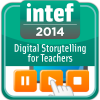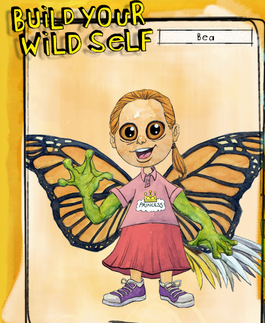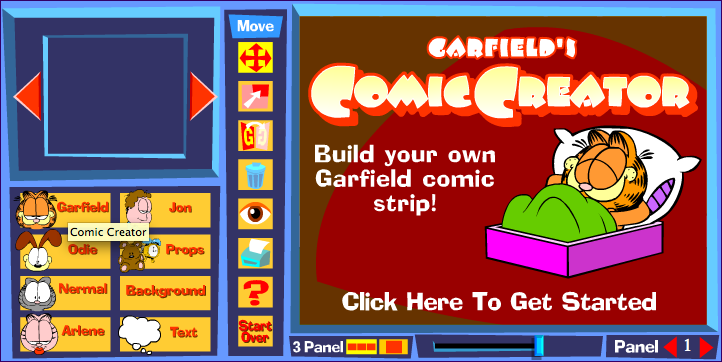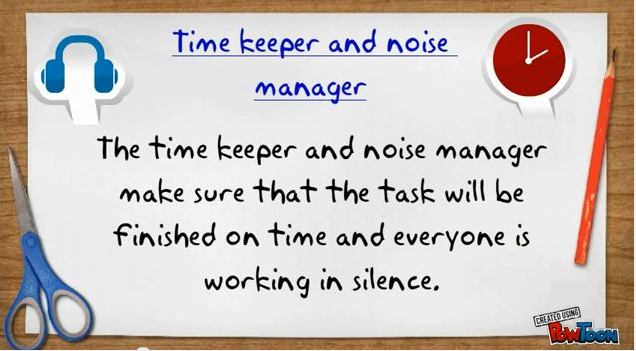Digital Storytelling for Teachers 2014
- El curso se desarrolla integramente en inglés.
- El poseedor de este emblema ha alcanzado los siguientes OBJETIVOS:
- DURACIÓN: 70 horas
MY DIGITAL STORYTELLING PORTFOLIO
- El poseedor de este emblema ha alcanzado los siguientes OBJETIVOS:
- Crea narraciones digitales a través de diferentes herramientas en línea.
- Selecciona la mejor vía de integración de la narración digital en la docencia del área o materia que imparte.
- Desarrolla materiales de ayuda a la creación y publicación de narraciones digitales para su alumnado.
- Conoce y selecciona materiales multimedia con las licencias apropiadas para su reutilización en narraciones digitales.
- Evalúa varios formatos de publicación de narraciones digitales (cómics, vídeos, formatos interactivos).
- Sabe cómo motivar al alumnado para mejorar su comunicación oral, y escrita, así como su comprensión lectora a través de narraciones digitales.
- Recopila una biblioteca de sitios web, herramientas y recursos libres y abiertos para utilizar en las propias clases.
- Conecta vía narraciones digitales con otras aulas y otros docentes del mundo.
- DURACIÓN: 70 horas
MY DIGITAL STORYTELLING PORTFOLIO
Module 1: Digital Literacy/Citizenship/Safety
- Assignment one: Internet Safety Activity (Link)
- Assignment two: Digital Literacy Citizenship (Link)
I created an Acceptable User Policy Form for my school. It is geared towards students in 1st of ESO. It includes a list of digital citizenship expectations and consequences for students not adhering to these guidelines and has a separate section for parents and students to sign and date that details what they are consenting to. (This is just an assignment so it is not an official AUP form)
- Assignment one: Internet Safety Activity (Link)
- Students will perform the rules that every student has to follow in order to keep them safe and private online.
- Students will become aware of the various ways one can stay safe and smart online.
- Students will be able to use a new digital tool to represent their work (Prezi).
- Students will work collaboratively to achieve a common objective.
- Assignment two: Digital Literacy Citizenship (Link)
I created an Acceptable User Policy Form for my school. It is geared towards students in 1st of ESO. It includes a list of digital citizenship expectations and consequences for students not adhering to these guidelines and has a separate section for parents and students to sign and date that details what they are consenting to. (This is just an assignment so it is not an official AUP form)
Module 2: Sharing Stories Through Comics
- Assignment one: Avatar Creation
- Assignment one: Avatar Creation
|
What I liked about this avatar builder is that you can go from very conservative human features to a wild appearance by adding different animal parts to various areas of your avatar’s body. You can choose from different hairstyles, eyes, eyebrows, glasses, mouths, clothes, headgears, ears, faces, arms, tails, backsides, and bottoms. You can also add a background to show the habitat of your just-created creature. Here is the website I used to create this avatar:
http://buildyourwildself.com/ You can find more websites to create your avatar at my AVATAR CREATION WEBMIX |
- Assignment two: 321 Introduction (Link)
I created this comic with the app "bitstrips" bitstrips.com/...You have different features to apply to your comic such as various layouts, a big art gallery where you can choose from multiple characters, scenes, props, furniture, effects, shapes and outfits; and you can also add some text bubbles to your comic. I think this app is aimed to high school students to improve their creativity and writing skills.
I created this comic with the app "bitstrips" bitstrips.com/...You have different features to apply to your comic such as various layouts, a big art gallery where you can choose from multiple characters, scenes, props, furniture, effects, shapes and outfits; and you can also add some text bubbles to your comic. I think this app is aimed to high school students to improve their creativity and writing skills.
|
- Assignment three: Comic Creator
Check this tool: You can choose from a variety of characters related to the Garfield TV show and use them in different panels. You can also select a background, several props to complement the panel, and choose between thinking and speaking bubbles to write text. In the tool banner, you can move, flip, scale and delete objects. Suitable for young learners in elementary levels. You can find more websites to create your comics at my COMIC TOOLS AND RESOURCES WEBMIX |
Module 3: Video Storytelling
- Assignment one: Storyboard (Link)
This is the storyboard for an animated educational story to explain what cooperative learning is and the importance of roles in order to achieve a particular task. It is aimed to students who have never worked in cooperative groups. The storyboard consists of 9 frames and I will use the website PowToon to develop the video of the story.
- Assignment one: Storyboard (Link)
This is the storyboard for an animated educational story to explain what cooperative learning is and the importance of roles in order to achieve a particular task. It is aimed to students who have never worked in cooperative groups. The storyboard consists of 9 frames and I will use the website PowToon to develop the video of the story.
|
- Assignment two: Video Editing Scenes (Link)
This is the 7/9 scene about cooperative learning that I created for my storyboard assignment. It shows the role of the time keeper and noise manager in the cooperative task. I created the video using Powtoon. It gives you a lot of options to created different characters, props and backgrounds but it demands some time in order to achieve a great result. This tool should be used with high schoolers. You can find more websites to create your comics at my VIDEO STORYTELLING WEBMIX |
Module 4: Collaborative Storytelling
- Assignment one: Chain Story
In a chain story, the teacher begins the story, student A continues the story, student B continues where A stopped, and so on. The students have to listen to each other and understand each other so that the story makes sense and flows. For this assignment I contributed to a collaborative web chain story about a girl who didn't like Science. I used the tool www.padlet.com - Padlet. You can add text, images, videos, and more.
- Assignment one: Chain Story
In a chain story, the teacher begins the story, student A continues the story, student B continues where A stopped, and so on. The students have to listen to each other and understand each other so that the story makes sense and flows. For this assignment I contributed to a collaborative web chain story about a girl who didn't like Science. I used the tool www.padlet.com - Padlet. You can add text, images, videos, and more.
|
- Assignment two: Evaluation of a Global Project (Link)
For this assignment I evaluated a global project called GlobalReadAloud-www.globalreadalo... that had a digital storytelling component. I examined how the digital story is organized online and edited and made observations and presented my findings in a presentation using the tool Capzles- www.capzles.com/. I created the presentation adding screenshots and other pictures that showed what the project consisted of and also displayed an example of one particular project. - Assignment three: Developing a collaborative storytelling story This is my first attempt carrying out a collaborative story. In this project, students in 1st grade developed a story about princesses, fairies, flowers, a magic wand and a prince during their English period. I created a voicethread presentation that included text, pictures and audios recorded by my students. Check www. voicethread.com to learn more about this tool and voicethread.com/... to view the final presentation. You can find more websites to create your collaborative stories at my COLLABORATIVE LEARNING WEBMIX |
|
Module 5: Storytelling with Mobile Devices
- Assignment one: Evaluating Web Based Apps (Link)
Google Drive is like a cloud. You can create folders, documents, presentations, spreadsheets, forms and drawings and share them with other people. Changes are updated automatically when shared. You can also make any file available offline.
- Assignment two: Mobile Learning and ICT Lesson Plan (Link)
Students will watch a video where the clips that are illustrated show how people use words in different ways depending on the context in which they are utilized. It is an introduction to polysemic words. Afterwards, students will divide in groups and they will create their own video showing the different meanings of polysemic words.
- Assignment three: I Can Card (Link)
I can cards were developed by Kristen Wideen, a teacher in Canada. I can cards provide learners with a simple step by step instructions that are supported with visuals and also come with word bank. Here is the "I can card" I would use for the Mobile Learning Lesson Plan.
- Assignment one: Evaluating Web Based Apps (Link)
Google Drive is like a cloud. You can create folders, documents, presentations, spreadsheets, forms and drawings and share them with other people. Changes are updated automatically when shared. You can also make any file available offline.
- Assignment two: Mobile Learning and ICT Lesson Plan (Link)
Students will watch a video where the clips that are illustrated show how people use words in different ways depending on the context in which they are utilized. It is an introduction to polysemic words. Afterwards, students will divide in groups and they will create their own video showing the different meanings of polysemic words.
- Assignment three: I Can Card (Link)
I can cards were developed by Kristen Wideen, a teacher in Canada. I can cards provide learners with a simple step by step instructions that are supported with visuals and also come with word bank. Here is the "I can card" I would use for the Mobile Learning Lesson Plan.





